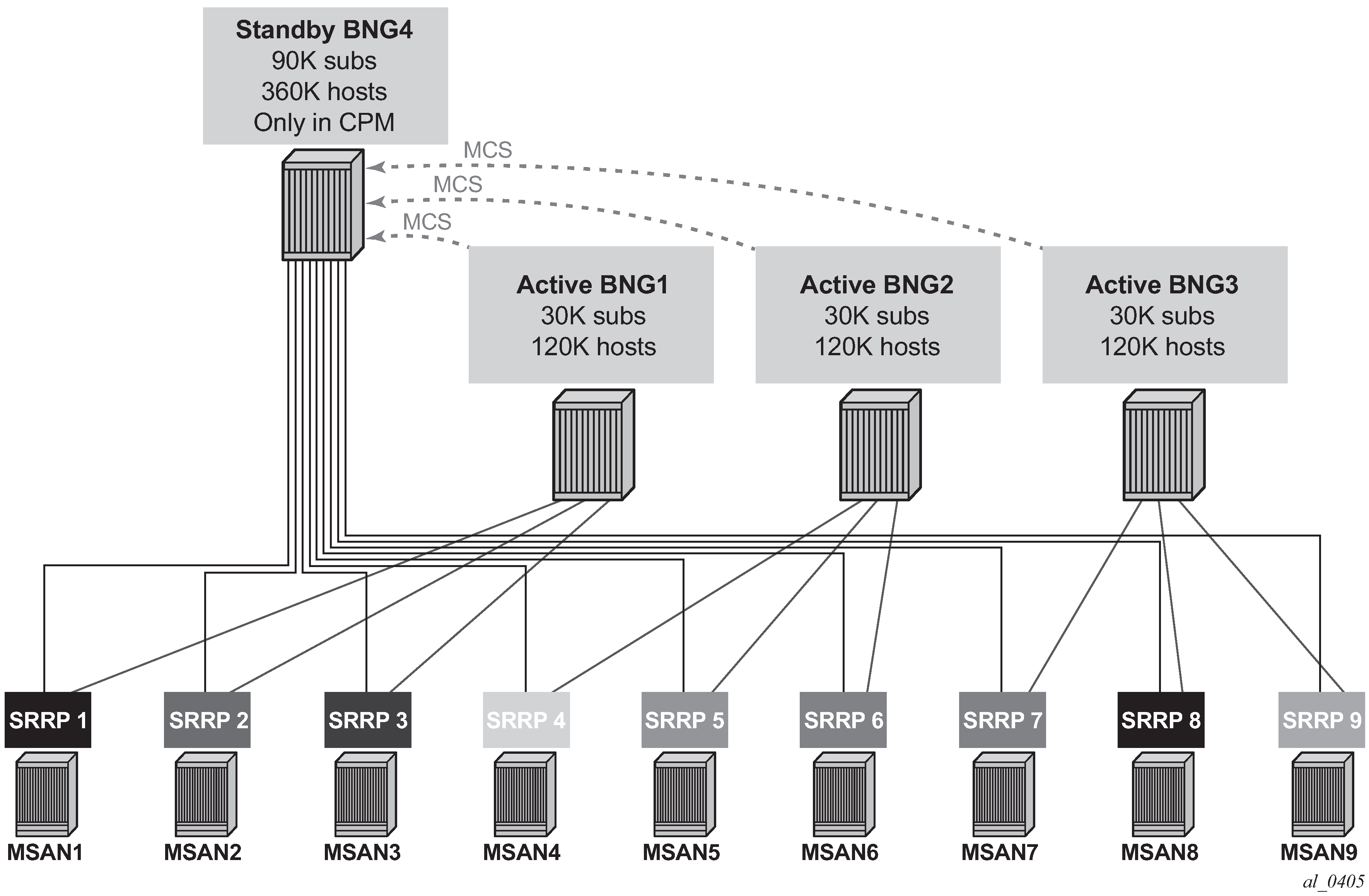To optimize the cost, operators prefer an oversubscribed model in which a single central standby BNG (protecting BNG) supports multiple other BNGs in a semi-stateful fashion.
In Oversubscribed Multi-Chassis Redundancy (OMCR) model, many subscriber-hosts are backed up by a single central standby node. Standby subscriber-hosts within the protecting node are synchronized only within the control plane (CPM) in the form of a Multi-Chassis Synchronization (MCS) record. Such subscriber hosts are not instantiated in the data plane and therefore the data plane resources can be spared and used only on an as needed basis. This trait allows the protecting node to back up many subscribers that are scattered over multiple active BNG nodes at the expense of slower convergence.
Only a subset of the subscribers, up to the available resource capacity of the data plane in the protecting node, would be activated on the protecting node at any specific time during the failure.
The failover trigger is based on SRRP (no MC-LAG support). The subscriber hosts under the corresponding group-interface is switched over after the SRRP instance on the protecting node transitions into the SRRP master state.
There are two possible models for this deployment:
Access nodes are directly connected to the BNGs. From the perspective of standby subscribers, in this model the line card is oversubscribed but the physical ports on it are not. For example, each of the 10 physical ports on the same line card can be directly connected to respective access nodes. Assume that each physical port can support 64K subscriber hosts. Considering that the subscriber host limit per line card is also 64K (at the time of this writing), the oversubscription ratio in this case would be 10:1.
The concept of this deployment scenario is shown in Figure: OMCR scenario without an aggregation network.
Figure: OMCR scenario without an aggregation network
Aggregation network in the access (double VLAN tags). In this case a line card and a physical port can be oversubscribed with standby subscribers. For example, multiple capture-saps (each capture SAP containing 4K c-vlans) can be created on a single physical port on the protecting BNG, for the total of >>64K subscribers per physical port.
Conceptual model for this scenario is shown in Figure: OMCR scenario with an aggregation network (although the number of SRRP instances and capture-saps is in this figure is reduced for simplification).
Figure: OMCR scenario with an aggregation network
In both cases, a maximum of 64K subscribers per line card can be activated on the protecting BNG during the switchover. This is something that the operator should plan around, and consequently group the access nodes in a way so that the eventual number of active subscribers per line card on the protecting node does not exceed the maximum number of supported subscribers per line card.